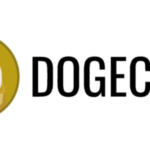Dogecoin’s Ascendancy: From Meme to Legitimate Cryptocurrency

In December 2013, two software engineers, Billy Markus and Jackson Palmer, introduced Dogecoin as a fun and light-hearted response to the seriousness of other cryptocurrencies like Bitcoin. Using the popular Shiba Inu dog meme as its mascot, Dogecoin quickly captured the hearts of internet users worldwide, carving out a niche for itself in the crypto market.
Despite its humble beginnings, Dogecoin gained momentum and attracted a loyal community known for its humor and generosity. In 2014, the community raised funds for charitable causes like building clean water wells in Kenya and sponsoring the Jamaican bobsled team at the Sochi Winter Olympics. These acts of kindness helped Dogecoin earn a positive reputation in the cryptocurrency sphere.
One of the unique features that sets Dogecoin apart is its inflationary supply model. Unlike Bitcoin, which has a capped supply, Dogecoin has no maximum limit, with new coins added at a fixed rate each year. This abundance makes Dogecoin more accessible and suitable for microtransactions and tipping due to its quicker transaction processing times and lower fees.
Social media played a key role in Dogecoin’s rise to fame, as platforms like Reddit, Twitter, and TikTok helped spread the word and attract new investors. Celebrity endorsements, most notably from Elon Musk, further boosted Dogecoin’s popularity, leading to significant price surges and heightened market volatility.
By May 2021, Dogecoin had reached an all-time high value, catching the attention of mainstream financial platforms and institutions. Acceptance by the Dallas Mavericks for ticket and merchandise purchases marked a turning point for Dogecoin, signaling its mainstream recognition and acceptance as a legitimate digital currency.
While Dogecoin has faced criticism for its perceived lack of real-world utility and reliance on hype, efforts to enhance its technology and scalability are ongoing. The development team is working to address security and speed issues, demonstrating a commitment to improving the coin’s functionality.
In conclusion, Dogecoin’s journey from a meme to a serious cryptocurrency highlights the power of community-driven initiatives and internet culture in shaping the financial landscape. Its potential for growth and impact on the cryptocurrency world is undeniable, setting a precedent for other meme-based digital currencies to follow suit. Despite uncertainties about its future, Dogecoin has left a lasting mark on the cryptocurrency market, showcasing the possibilities for innovation and disruption in the digital currency realm.





